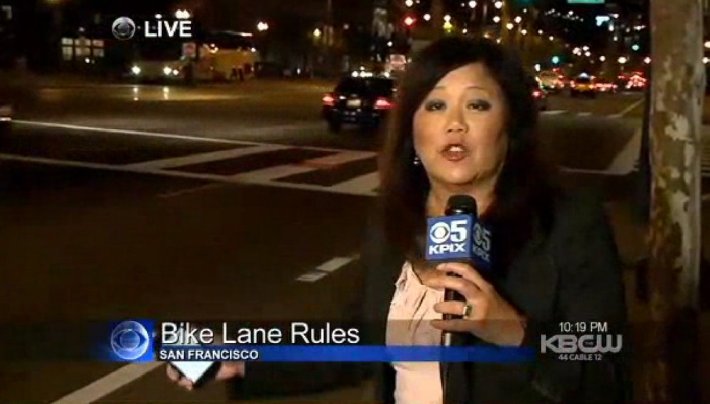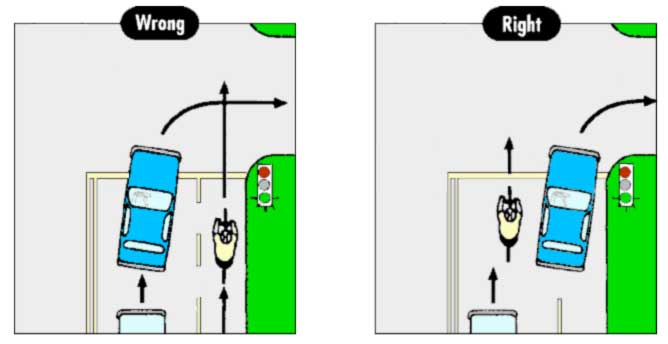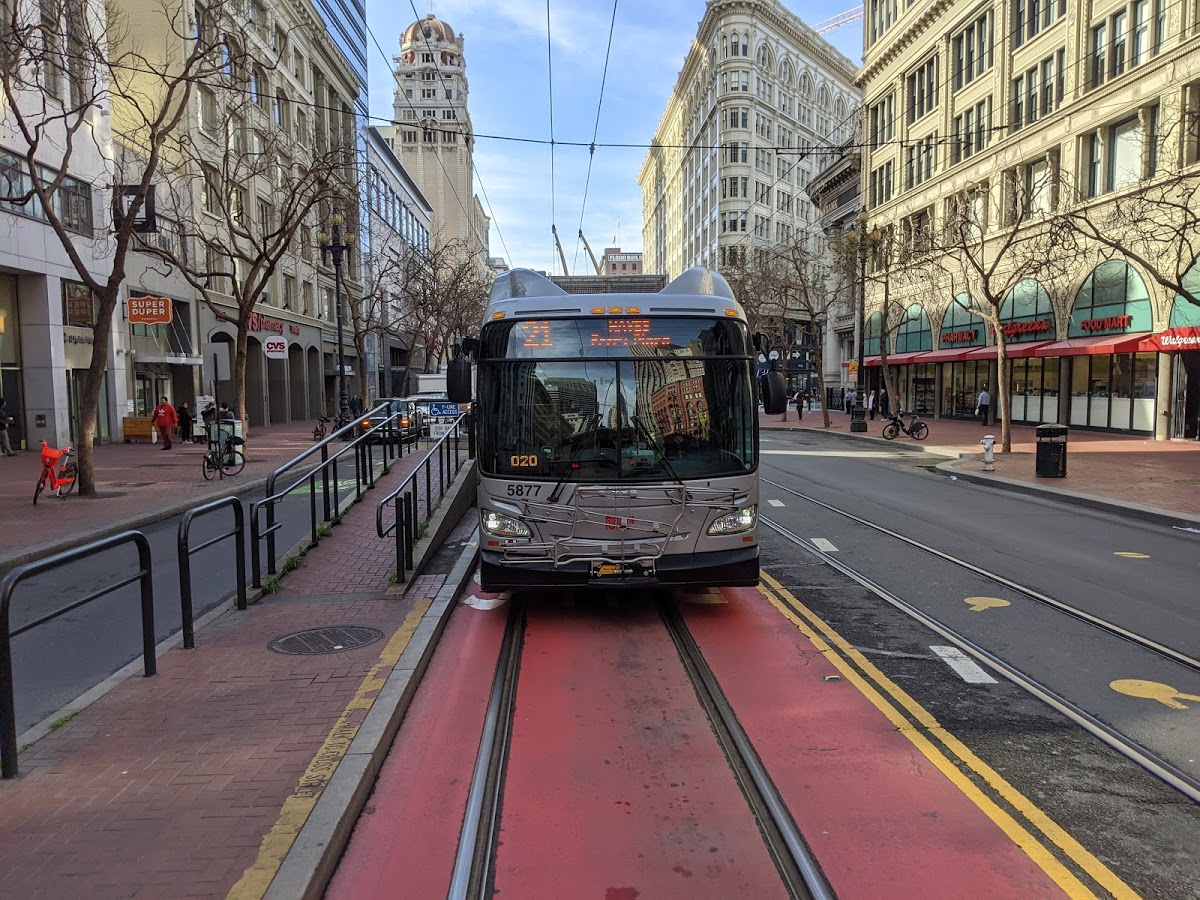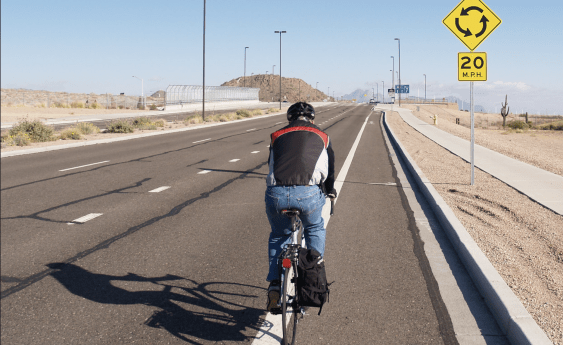A clear understanding of California's right-of-way laws is crucial if drivers are to avoid colliding with people using San Francisco's bike lanes. As we saw this week, a "right-hook," in which a driver turns right into the path of a bike rider, can be fatal.
But when CBS 5 reporter Linda Yee sought to clarify those laws for the public, well, she failed. The news segment aimed at clarifying confusion erroneously stated that drivers can enter a bike lane, in front of bicycle traffic, as long as the driver is in front of the bike rider.
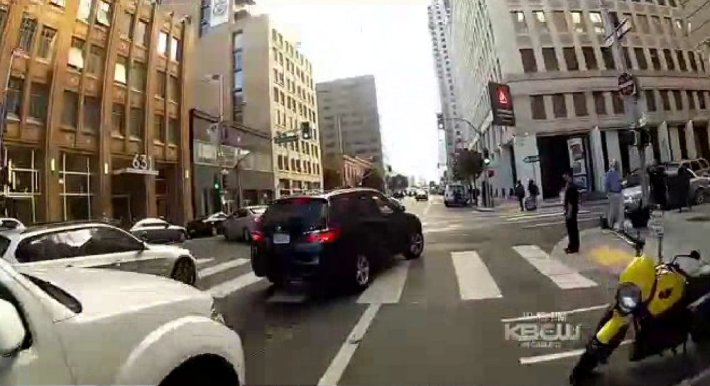
Yee spent a good amount of time explaining the fact that there is much danger and confusion in SF's bike lanes, but didn't actually cite the California Vehicle Code (see that below), only sourcing an SFPD officer who explained that a bicycle rider can only pass a right-turning driver stopped in the bike lane when it's safe to do so.
"I would say it is flat out wrong," said Robert Prinz, education coordinator for the East Bay Bicycle Coalition.
In their classes, the EBBC and the SF Bicycle Coalition teach bicycle riders and motorists that when it comes to right turns, "a bike lane is a travel lane, just like any other one on the roadway," as Prinz put it. "So if a car driver is making a right turn without merging into it then they are always in the wrong by not turning right from the rightmost lane, even if they arrived at the intersection first."
"Would a car driver be expected to yield to another driver turning right across their path from one of the middle lanes? The same situation applies for bikes."
Here's what the CVC says, via the SFBC's page on right turns:
Motor Vehicles in Bicycle Lanes
21209. (a) No person shall drive a motor vehicle in a bicycle lane established on a roadway pursuant to Section 21207 except as follows:
(1) To park where parking is permitted.
(2) To enter or leave the roadway.
(3) To prepare for a turn within a distance of 200 feet from the intersection.
Turning Across Bicycle Lanes
21717. Whenever it is necessary for the driver of a motor vehicle to cross a bicycle lane that is adjacent to his lane of travel to make a turn, the driver shall drive the motor vehicle into the bicycle lane prior to making the turn and shall make the turn pursuant to Section 22100 [general turning regulations].
The CBS segment showed the SFBC's diagram explaining that drivers are expected to merge close to the curb when making turns, and not turn across the bicycle lane. But SFBC Executive Director Leah Shahum, who was interviewed for the segment, said CBS left out the majority of what she said about the responsbililty of motorists to yield to bicycle traffic before merging into a bike lane.
"The number one cause of injuries for people biking in San Francisco is right turning vehicles. We were glad to see that CBS wanted to do a piece on how to avoid this all-too-common and often deadly crash," said Shahum. "We spoke extensively with the reporter about what drivers should do in order to avoid this dangerous right hook, including the importance of 'turning from the curb.' It's disappointing to see that this was not highlighted in the final piece."
As Shahum explained in the segment, bike riders do have the responsibility of passing to the left of right-turning drivers, and squeezing by a driver's right side is dangerous.
But Prinz said the misunderstandings about bike lane right-of-way seems common among police departments in the Bay Area.
"I've had this same conversation about bike lanes and right turns with other PDs in the East Bay," said Prinz, "and it comes as a revelation almost every time once you ask them to substitute the bike for another car in the same situation."
"It is frustrating and downright scary that even the SFPD doesn't understand this, and it makes me wonder how this clouds their perception of fault at the site of a collision."
